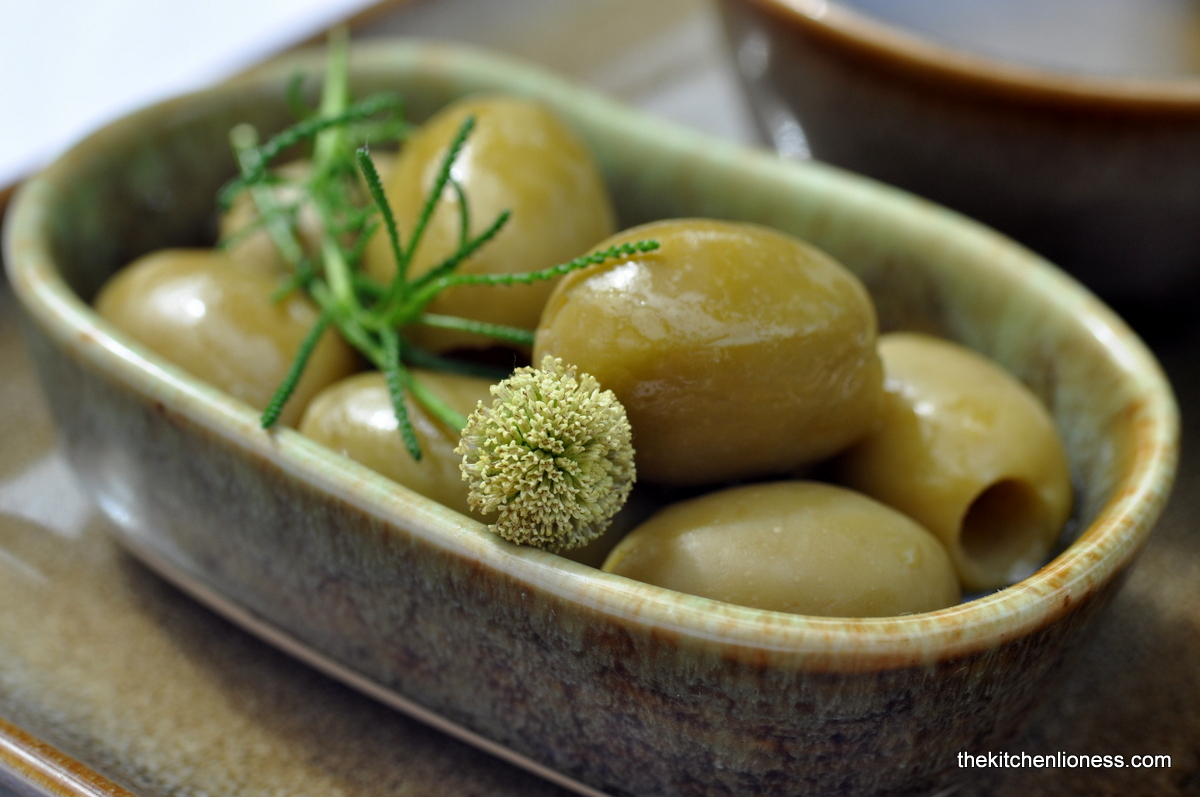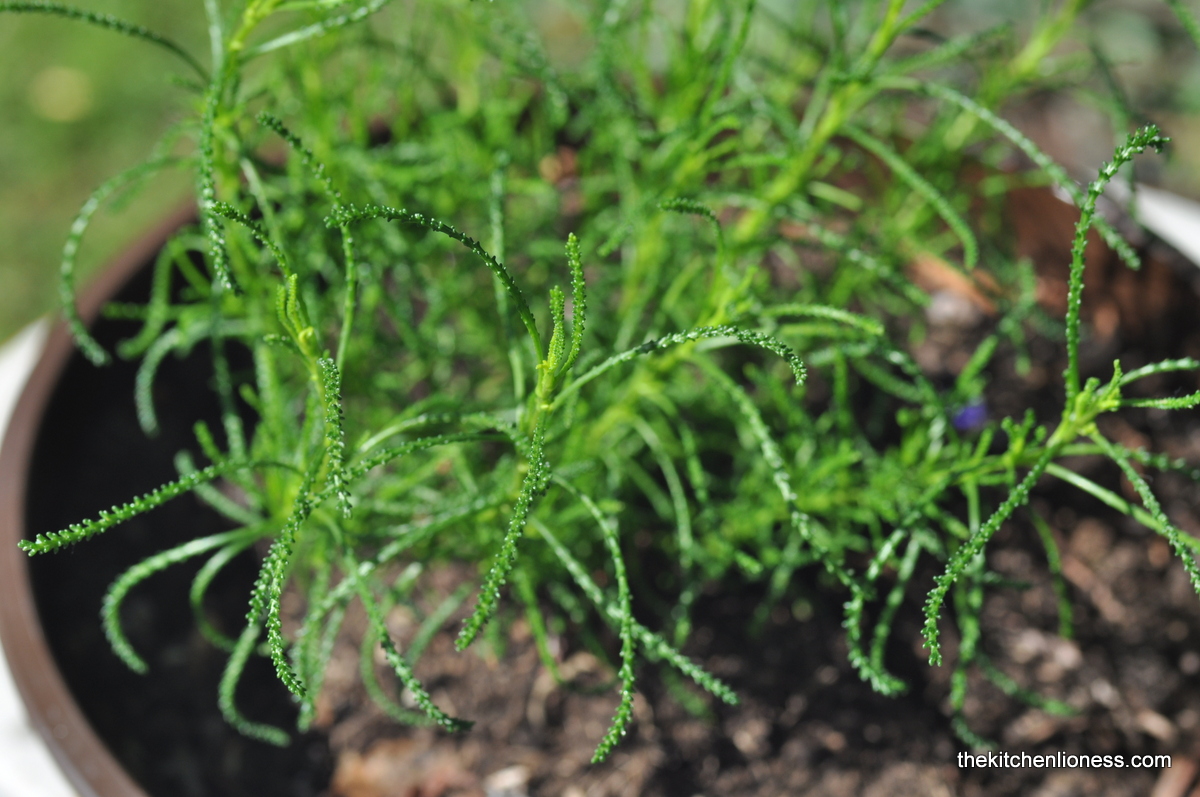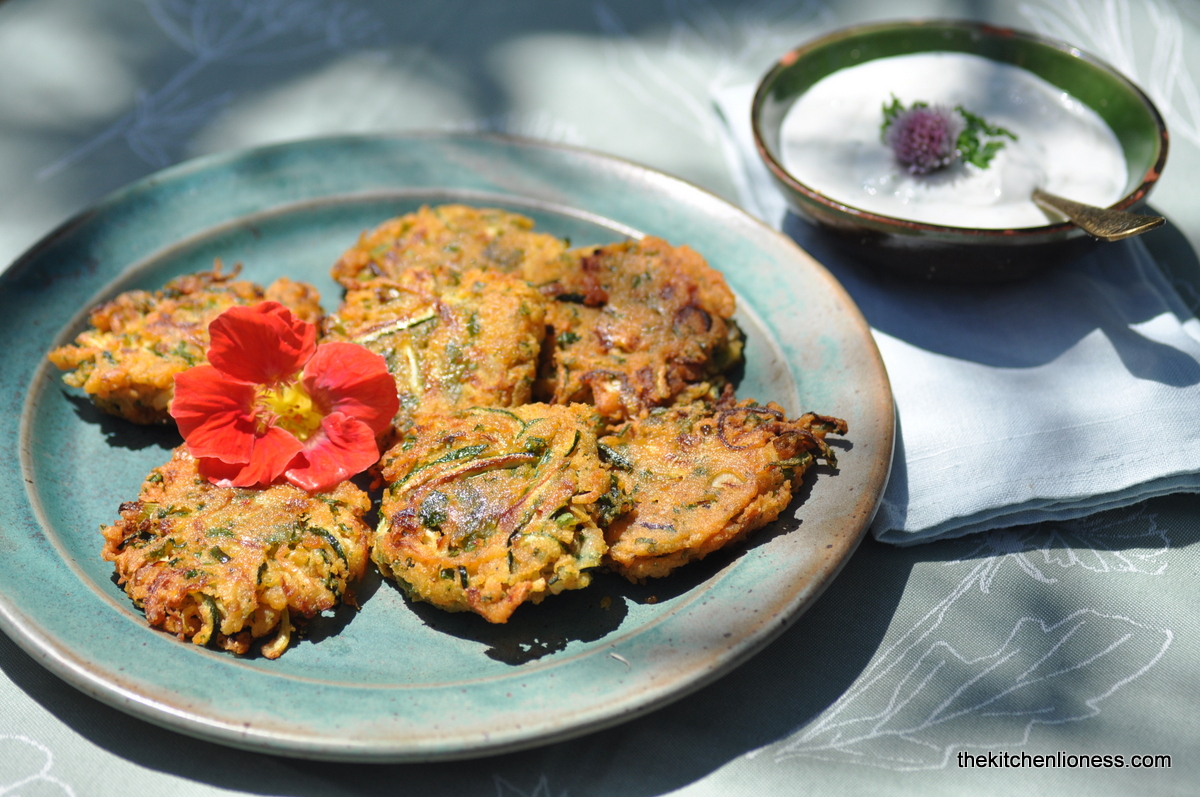Focaccia is a flat oven-baked Italian bread, served as a side or
(depending on whether you top it with herbs, veggies and fruits or not) made into a sandwich. Basically, it
only requires five ingredients, flour, water, yeast, olive oil and salt. Accordingly, my rustic Herb Focaccia recipe is easy to make and to adapt with whatever herbs
you have on hand.
While there are countless recipes and variations of Focaccia, for my version of Herb Focaccia, I chose one of my favorite herbs, the so-called ‘olive herb’ (bot. Santolina viridis or Santolina rosmarinifolia), also known as ‘holy flax’.
It is a perennial, hardy and woody plant that is rather low maintenance. It grows as a small, compact shrub up to 30 to 50cm (12 to 20in) high which makes it ideal as a hedge and in borders, it is also well suited to growing in containers which means it can easily go on a sunny terrace or balcony.
This culinary plant has dark green needle-like leaves that are reminiscent of rosemary and which have the flavor and aroma of marinated green olives. Come summertime, it is known to produce small yellow button flowers, which I used for dressing up my Focaccia as well.
The olive herb can be grown from seed but they are not always easy to find. After the plant flowers, it produces achenes (source), a type of nut fruit which can be sown in early spring. In spring, it can be propagated through cuttings, much the same as you would do for propagating rosemary.
The plant is so low maintenance that you can simply plant it and forget it. Like most woody herbs, it likes full sun and well-drained soil. And, according to my humble experience, it seems to be tolerant of most diseases and garden pests.
The culinary uses of olive herb are countless. It adds a savory flavor to many dishes and once you start using it, you will find it to be very versatile in the kitchen. For example, you can add it to salads, or pasta, but also to marinades, pesto, mushroom dishes, pizza, and, of course to focaccia. You can also use it in place of rosemary, with fish or roast meats and make flavored salts. To make flavored salt, start with about 75g (0.25 cup) coarse salt plus ½ tsp dried olive herb.
The little branches can also be used for cocktails and drinks or cut and hung to dry for later use.
Focaccia with Olive Herb l Focaccia mit Olivenkraut
Ingredients
- 300g strong baking flour ( '00')
- 1 ½ tsp fine sea salt
- 21g fresh yeast OR 7gr dried yeast
- 2 tbsp olive oil (suitable for cooking), plus some for drizzling the dough and for brushing the herbs just before baking
- 200ml warm water
- a few sprigs of olive herb or other woody herbs such as thyme, rosemary, lavender, bay, marjoram, sage or hyssop
To finish and for dipping
- olive oil, mild, preferably a fruity olive oil
- flaky sea salt, such as fleur de sel or Maldon
Preparation
- Place the flour, salt, yeast, olive oil and 100ml of the water into a large bowl. Gently stir with your hand or a wooden spoon to form a dough, then knead the dough in the bowl for five minutes, gradually adding the remaining water.
- Stretch the dough by hand in the bowl, tuck the sides into the center, turn the bowl 90 degrees and repeat the process for about five minutes.
- Tip the dough onto an oiled work surface and continue kneading for five more minutes. Return the dough to the bowl, cover and leave to rise until doubled in size.
- Line a large baking tray with baking paper. Tip the dough out of the bowl and flatten the dough onto the prepared tray, pushing to the corners, cover with a large plastic bag, making sure it does not touch the top of the dough, then leave to prove again - for about one hour.
- Preheat your oven to 220°C or as hot as it will go.
- Now, if you wish to top the Focaccia with herbs, just before you drizzle the bread with olive oil, make small indentations all over the dough, then break off small sprigs of the herb you are using from a couple of larger sprigs, and push the small sprigs into each indentation or try to tush them into the dough as best as you can. OR just drizzle the Focaccia with olive oil, sprinkle with sea salt then bake in the oven for 20 minutes, or until golden.
- When cooked, drizzle with a little more olive oil and serve straight from the oven or warm/at room temperature.
Recipe Tips
- Try adding other garden herbs or leave the focaccia herb free.
- Serve with your favorite fruity, high-quality olive oil for dipping, some additional fleur de sel or Maldon salt for sprinkling and some olives for munching alongside.
- When stale, cut or break into chunks and fry in olive oil (the one that is suitable for cooking) – so you will end up with lovely croutons for your salad – maybe a for a Panzanella (a summery Italian bread and tomato salad) or an American Caesar salad.
More Focaccia inspiration from my blog:
• Focaccia with Butternut Squash and Winter Sage (Focaccia mit Butternut Kürbis und Wintersalbei) (HERE)
• Focaccia with Za’atar (Focaccia mit Za'atar) (HERE)
• Wild Garlic and Cheese Focaccia (Focaccia mit Bärlauch und Käse) (HERE)
• Fennel and Grape Focaccia (Fenchel-Trauben Focaccia) (HERE)

































